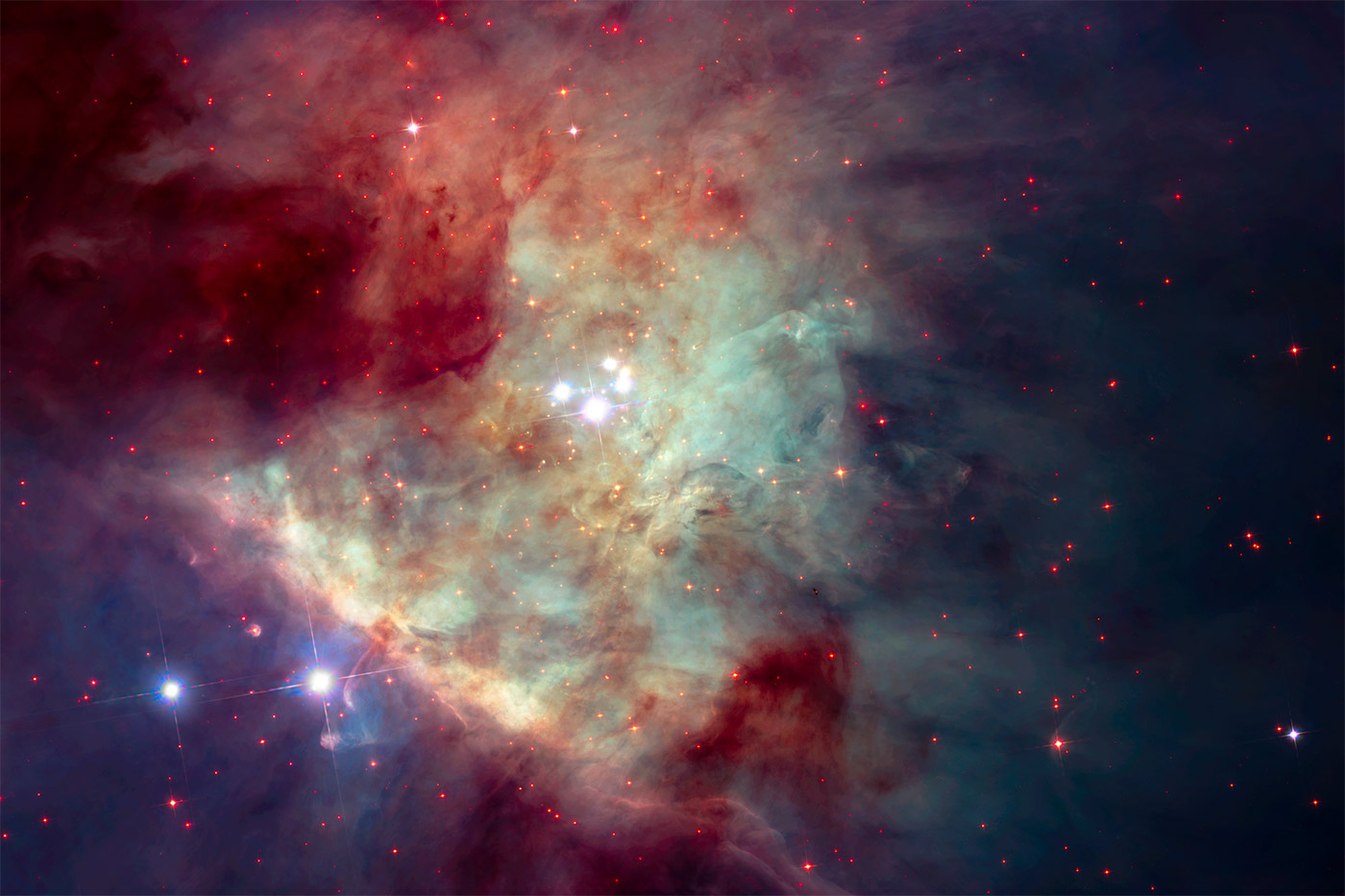STScI: Webb to Study How Massive Stars’ Blasts of Radiation Influence Their Environments

The Orion Bar is a diagonal, ridge-like feature of gas and dust in the lower left quadrant of this image of the Orion Nebula. Sculpted by the intense radiation from nearby hot, young stars, the Orion Bar at first glance appears to be shaped like a bar. It is probably prototypical of a photodissociation region, or PDR. Credits: SCIENCE: NASA, ESA, Massimo Robberto (STScI, ESA), Hubble Space Telescope Orion Treasury Project Team IMAGE PROCESSING: Alyssa Pagan (STScI)
In a nearby stellar nursery called the Orion Nebula, young, massive stars are blasting far-ultraviolet light at the cloud of dust and gas from which they were born. This intense flood of radiation is violently disrupting the cloud by breaking apart molecules, ionizing atoms and molecules by stripping their electrons, and heating the gas and dust. An international team using NASA’s James Webb Space Telescope, which is scheduled to launch in October, will study a portion of the radiated cloud called the Orion Bar to learn more about the influence massive stars have on their environments, and even on the formation of our own solar system.
“The fact that massive stars shape the structure of galaxies through their explosions as supernovas has been known for a long time. But what people have discovered more recently is that massive stars also influence their environments not only as supernovas, but through their winds and radiation during their lives,” said one of the team’s principal investigators, Olivier Berné, a research scientist at the French National Centre for Scientific Research in Toulouse.
Why the Orion Bar?
While it might sound like a Friday-night watering hole, the Orion Bar is actually a ridge-like feature of gas and dust within the spectacular Orion Nebula. A little more than 1,300 light-years away, this nebula is the nearest region of massive star formation to the Sun. The Orion Bar is sculpted by the intense radiation from nearby, hot, young stars, and at first glance appears to be shaped like a bar. It is a “photodissociation region,” or PDR, where ultraviolet light from young, massive stars creates a mostly neutral, but warm, area of gas and dust between the fully ionized gas surrounding the massive stars and the clouds in which they are born. This ultraviolet radiation strongly influences the gas chemistry of these regions and acts as the most important source of heat.
PDRs occur where interstellar gas is dense and cold enough to remain neutral, but not dense enough to prevent the penetration of far-ultraviolet light from massive stars. Emissions from these regions provide a unique tool to study the physical and chemical processes that are important for most of the mass between and around stars. The processes of radiation and cloud disruption drive the evolution of interstellar matter in our galaxy and throughout the universe from the early era of vigorous star formation to the present day.
“The Orion Bar is probably the prototype of a PDR,” explained Els Peeters, another of the team’s principal investigators. Peeters is a professor at the University of Western Ontario and a member of the SETI Institute. “It’s been studied extensively, so it’s well characterized. It’s very close by, and it’s really seen edge on. That means you can probe the different transition regions. And since it’s close by, this transition from one region to another is spatially distinct if you have a telescope with high spatial resolution.”
The Orion Bar is representative of what scientists think were the harsh physical conditions of PDRs in the universe billions of years ago. “We believe that at this time, you had ‘Orion Nebulas’ everywhere in the universe, in many galaxies,” said Berné. “We think that it can be representative of the physical conditions in terms of the ultraviolet radiation field in what are called ‘starburst galaxies,’ which dominate the era of star formation, when the universe was about half its current age.”
